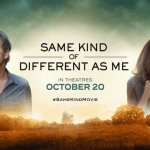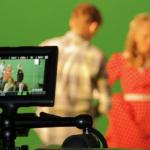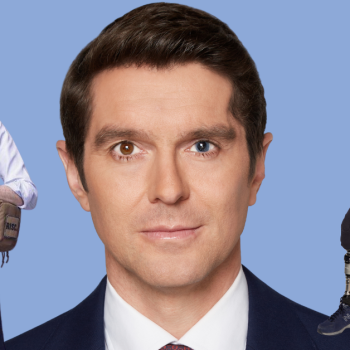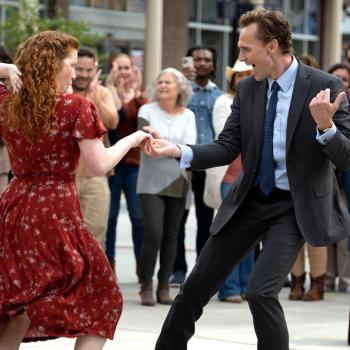 If Jane Goodall has taught the world anything, it’s that persistence and patience can wear down mountains — and win the trust of wild chimpanzees.
If Jane Goodall has taught the world anything, it’s that persistence and patience can wear down mountains — and win the trust of wild chimpanzees.
This weekend, director Brett Morgen’s documentary biography “Jane” goes into limited release across America, with dates scheduled into December in various theaters. After being seen on the big screen, it airs on National Geographic Channel in 2018.
‘Jane’ Comes From Long-Lost Footage
Featuring recently rediscovered footage from Goodall’s filming partner and first husband, wildlife filmmaker Baron Hugo van Lawick — shot in 1962 and found in 2014 — “Jane” retraces the familiar story of how the 26-year-old secretary to anthropologist and paleontologist Louis Leakey undertook a mission from her boss to study the animal genetically closest to humans, the chimpanzee.
The animal-loving, British-born Goodall — with her mother as an escort — spent months watching chimps in Gombe Stream National Park in Tanzania and gaining their trust, meticulously recording her observations. The amateur primatologist’s findings were so compelling that National Geographic sent van Lawick to make a film record.
Goodall’s life — including marriage and the birth of her son — eventually led her beyond Gombe, but the research continued. While the emotional lives of the chimps were revealed, to Goodall’s dismay, their violent and warlike side also appeared. The young woman’s notion of an Edenic existence at Gombe didn’t hold up under scrutiny.
Original National Geographic magazine and TV coverage of Goodall’s research made her and the chimps of Gombe worldwide celebrities.
The film also includes other of van Lawick’s nature films (he seems particularly fond of caterpillars), and an interview with Goodall by documentarian Morgen.
‘Jane’ Takes Over the Hollywood Bowl
On Oct. 9, in a sold-out performance at the Hollywood Bowl — including NatGeo’s invited guests, such as myself and Family Theater Productions producer Tony Sands — the film screened, with musical accompaniment from an orchestra led by composer Philip Glass.
Goodall and Morgen were also on hand, as was Goodall’s son and grandson. Click here for the video of a Facebook Live broadcast, courtesy of Vanity Fair magazine.
As far as the film itself, the footage is beautiful, but as I said, there are a lot of caterpillars and other wildlife footage that has nothing to do with chimps. One can’t call the film a pure documentary, either. That’s because, as I realized when we got to the point in the story were van Lawick arrives, we’d already seen many shots of Goodall climbing, gazing and slipping through underbrush — all shot by the filmmaker who wasn’t there yet.
But it is charming to realize that, as van Lawick shot Goodall in the forest and at camp, the two were also falling in love.
As an interview subject, Goodall is confident yet self-effacing, fully aware of the position she made for herself in the world of primatology, but calmly matter-of-fact about it all — in short, very, very British.
Louis Leakey, Mary Leakey and the “Trimates”
One thing, though … the tag line on the poster says, “It took a woman to unlock the secret of early man.”
If you’re going to talk about a woman actually unlocking secrets of early man, I would argue that should go to Louis Leakey’s wife, anthropologist and academic Mary Leakey. She was his partner in studying the earliest hominin at their fossil excavation at Olduvai Gorge in Tanzania, and made significant scientific discoveries of her own.
It’s more accurate to look at Jane Goodall as a brave, intrepid amateur who used her native talents of observation, determination and endurance to reveal a side of contemporary nature that might have eluded someone less patient and dedicated.
And, BTW, Leakey — a man ahead of his time — made it financially possible to send Goodall, who didn’t have a bachelors degree, to Cambridge, where she earned a PhD in ethology, the study of animal behavior. She used her experience at Gombe in her doctoral thesis, which was completed in 1965.
In 1967, Leakey also dispatched amateur researcher Dian Fossey — whom he met when she sprained her ankle and vomited on a fossil while visiting Olduvai Gorge in 1963 — to the Virunga Mountains in east-central Africa to study mountain gorillas.
In 1969, Birute Galdikas attended a lecture by Leakey at UCLA and told him of her wish to study orangutans. He set up the expedition, and in 1971, Galdikas found herself among the orangs of Borneo.
The three women, nicknamed the “Trimates,” with Leakey’s help, revolutionized the science of primatology.
The next time someone celebrates women in science, a few kudos need to be tossed to Louis Leakey, who was married to a great female scientist and mentored three more.
Image: Courtesy National Geographic
Don’t miss a thing: head over to my other home, as Social Media Manager at Family Theater Productions; and check out FTP’s Faith & Family Media Blog.














